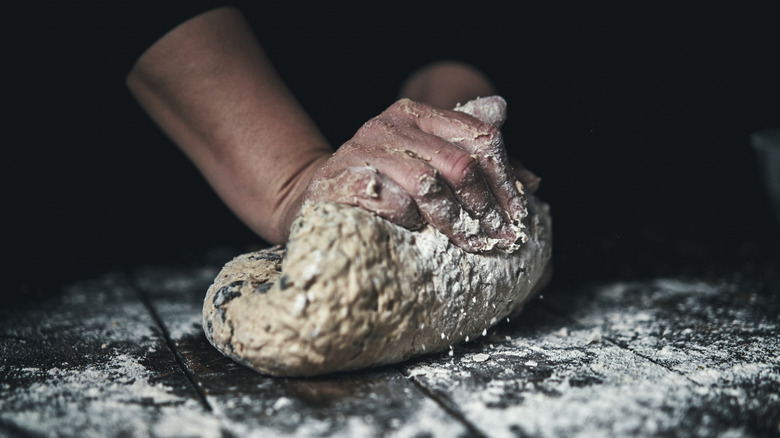Freshly baked sourdough is a slice of heaven on a platter but getting the bread to turn out right can be difficult. Bread in general is difficult to master and sourdough is one of the more complex members of the family. This is why we knew we had to ask about sourdough when we had the chance to talk to Nathan Myhrvold, founder of Modernist Cuisine and lead author of “Modernist Cuisine: The Art and Science of Cooking,” “Modernist Cuisine at Home,” “The Photography of Modernist Cuisine,” “Modernist Bread, “Modernist Pizza,” and the newest release, “Modernist Bread at Home.”
As you may imagine, picking the right flour is crucially important. There are a lot of different types of flour and each has its own unique characteristics. At a basic level, we can differentiate flours based on their protein content. “We found all-purpose flours with protein content ranging from 8% to 13%,” Myhrvold told Look. That’s a pretty wide range for a culinary art form that requires precision. “Flour that is used for bread should contain 11% to 13% protein,” he continued. “Lower protein levels can result in less volume, a tighter crumb, or a soft crust, which is not ideal for crusty breads such as sourdough.”
In other words, Myhrvold wasn’t confident in all-purpose flour’s ability to handle the job. If you’re confident that your flour brand sits in the 11% to 13% range then you should be fine but we prefer to use bread flour in our fresh-baked sourdough bread.
Generic all-purpose labels don’t give enough information to know

Not knowing the protein content of all-purpose flour presents a dilemma. “Unfortunately, not all millers agree on what all-purpose flour is,” Nathan Myhrvold told us. “So the term has become somewhat of a catchall.” All-purpose flour is supposed to be a middle ground between high-protein flours like Durum wheat flour and low-protein flours like soft white wheat flour created by blending high- and low-protein wheats together. But that leaves plenty of room for interpretation.
What makes matters even worse is that the confusion doesn’t clear up once you get away from the all-purpose label. “Not all brands of flour are standardized to the same protein content,” Myhrvold went on to explain. “Some companies will call a flour with 11.9% protein all-purpose flour while another brand will categorize a flour with 11.7% protein as bread flour.” While the labels can be helpful, the takeaway is that they should not be treated as clear demarcations.
Luckily for us, we don’t have to fly blind if we know what to look for. Most flour producers are aware that a good portion of their customers need more information about their product to know if it’s a good fit. Generic labeling is fine for most home cooks but seasoned bread makers are looking for specifics. Myhrvold’s tip was simple. “Look on the flour bag’s label or on the miller’s website to see if they list the protein content.”







